UMFA in the Wild: Paint a Nightscape
UMFA in the Wild is a program that aims to show how art and nature are intertwined. In the past, we met people in wild places around Utah to experience creating art with inspiration from nature. During this time of social isolation, we hope that you will still find inspiration in nature to create art as an individual or with your family.
In this activity, we will study the landscape and learn how to transform it into a nightscape. There are many ways to focus on a work of art—for this conversation, we are going to look specifically at how artists depict the night. We will learn how artists and scientists see the night and then make our own nightscapes using drawing materials and watercolor.
Let’s look at some art!
Today we are looking at art that shows the night! Artwork of the land is called a landscape, and when it is shown at night it is sometimes called a nightscape.
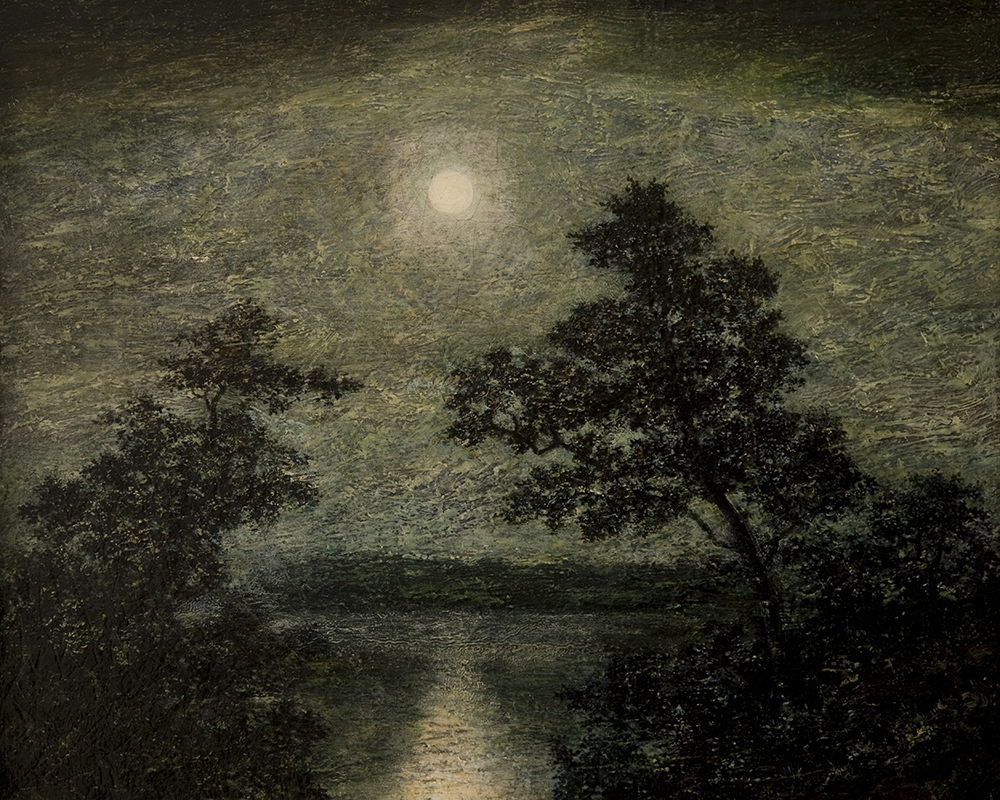
Look closely at this painting. How do you know it is a nightscape? Not only does the title give us a clue, but think about the colors that Blakelock used. Why is everything so gray?
Science Note: There are two kinds of light-sensitive organs located in the backs of our eyes: rod-shaped and cone-shaped. Both rods and cones are sensitive to light. The difference between them is that the rods allow us to see in very dim light but don't let us to see color, while the cones let us see color but they don't work in dim light.
When it gets dark the cones begin to lose their ability to respond to light. The rods continue to work with the available light, but since they cannot see color, everything appears to be shaded with gray.
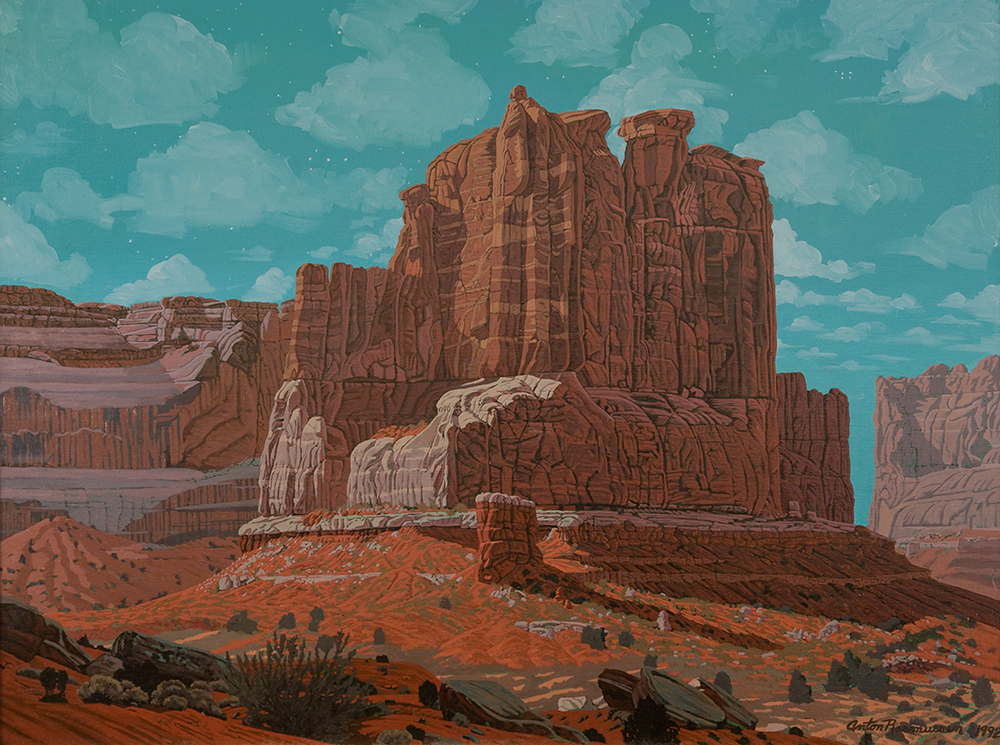
Like with Silvery Night, notice the muted and grayed-out colors of this nightscape. Also, notice the shadows–there is a light source somewhere off the canvas. What could the light source be at night? What direction is it coming from?
When you create your nightscape, you can add shadows too. You can even show the light source if you want to. What would it be? The moon, stars, a streetlight, a candle, or something else?
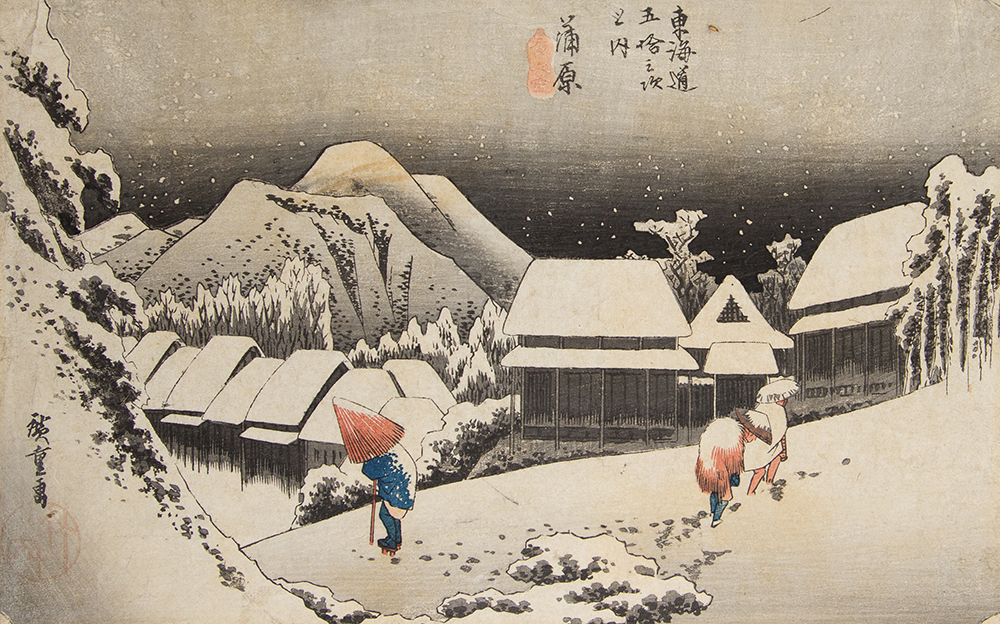
This print is called Evening Snow at Kambara. How do we know this scene is a nightscape? What color is the sky in this painting? Where are the clouds? Do you see stars or snow? A black sky at night lets you more easily see the moon, clouds, stars, and snow in the sky. Think about some objects you will show in the sky in your nightscape.
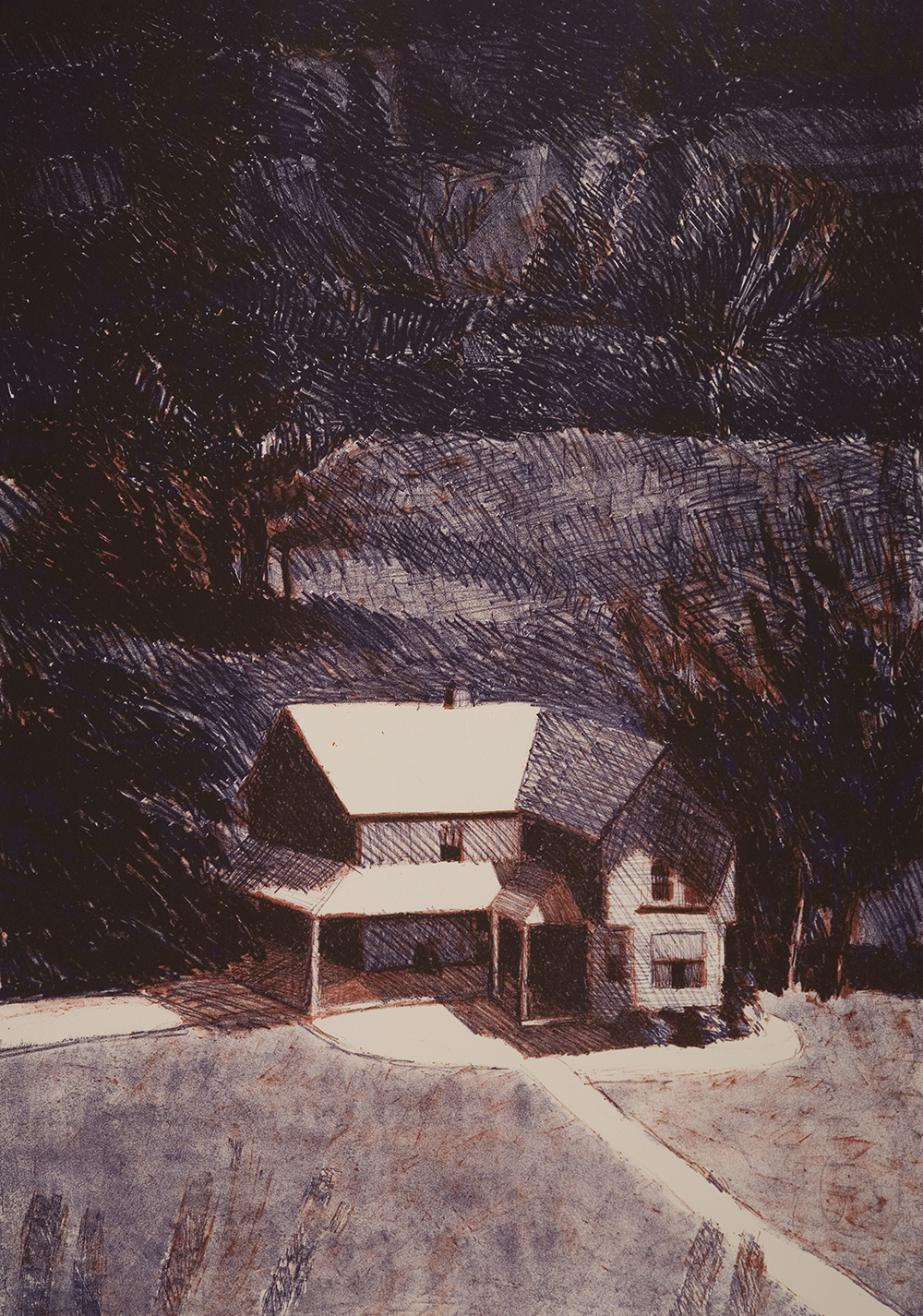
What is the first object you see in this print? Is it the bright white roof or path? Areas that are lighter are called highlights. Areas that are darker are usually in shadow. Even at night, there are highlights and shadows created from the reflected light of the moon, stars, or other light sources. Try putting some highlights and shadows in your drawing. Observing the landscape, especially at night, can give you a lot of clues for creating these highlights and shadows. What parts of an object in your drawing would be highlighted?
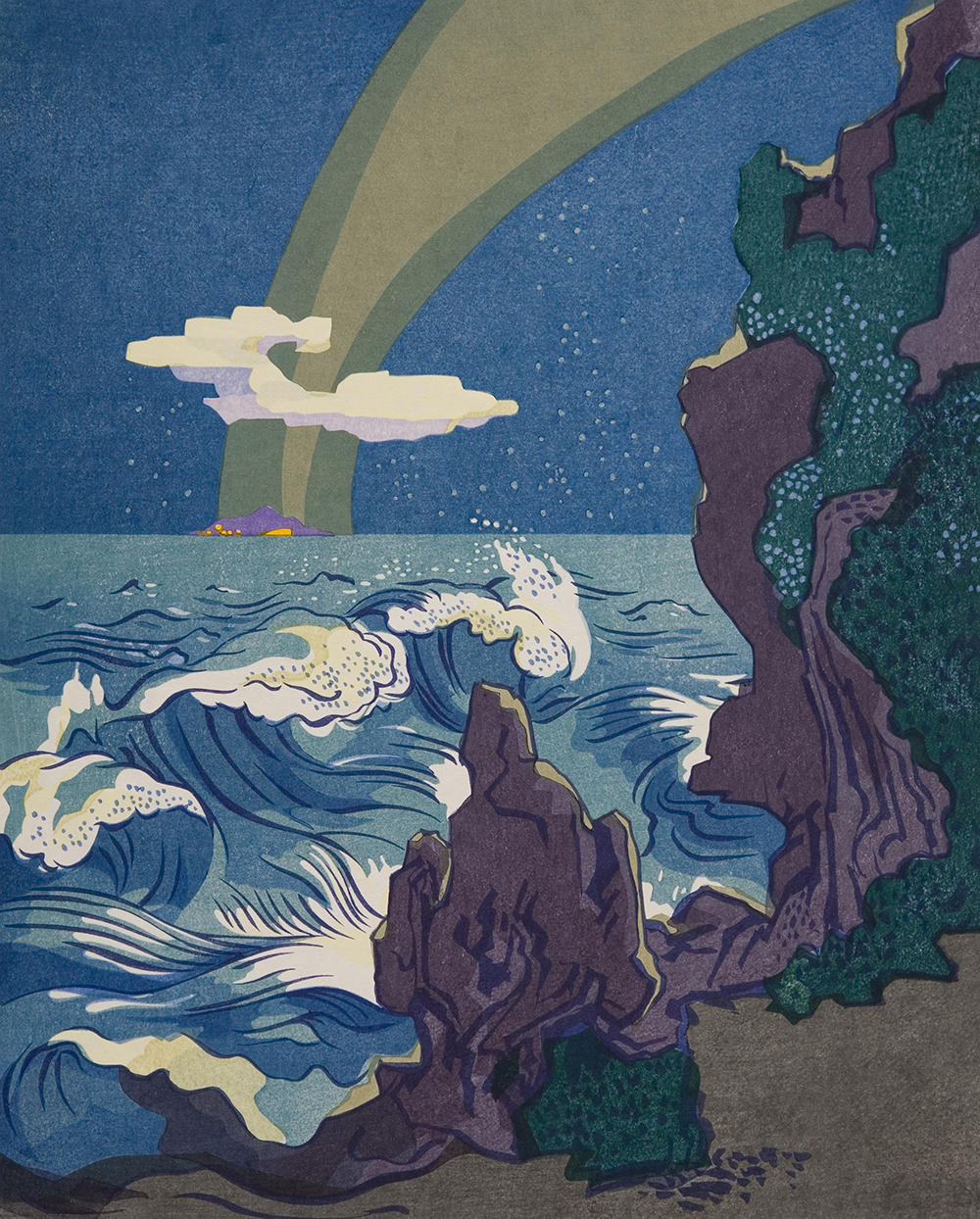
Read the title of this artwork. It is from a haiku by the famous Japanese poet Bashō. The artist has illustrated the poem and shown a wild sea, the Milky Way, and the Island of Sado in Japan. Both the poet and the artist have studied the night sky in order to make art. Try looking at the night sky tonight. What do you see? Is there anything that could be used in your nightscape drawing? Noticing the world around you can help you record the natural world and create interesting art.
Science Note: The Milky Way is a band of stars strewn across the sky. It is from an arm of our galaxy that can be seen from earth. In Japan, it is called River of Heaven.
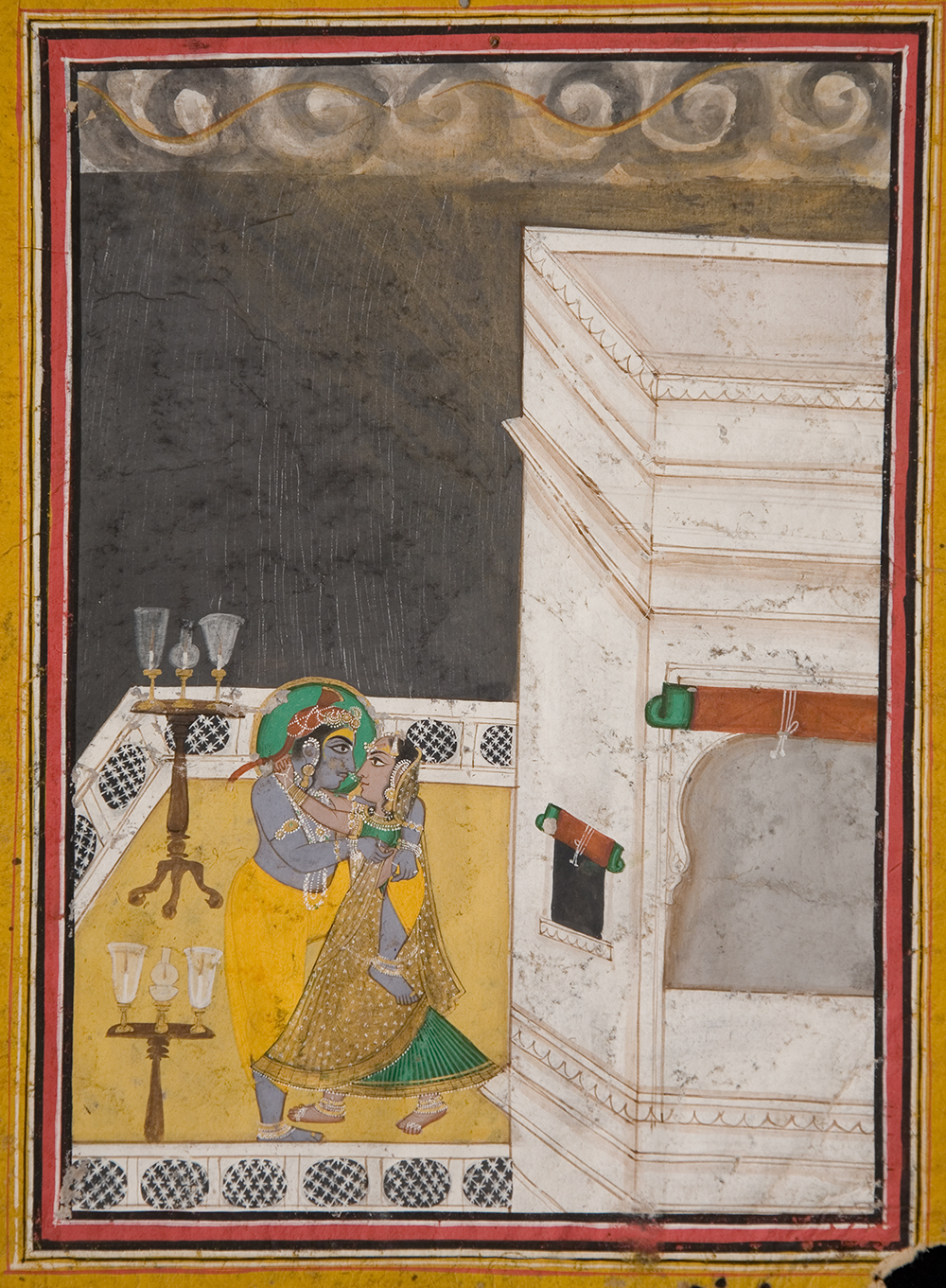
This painting from India shows the Hindu god Krishna embracing his companion on a terrace at night. How do we know this is a night scene? One clue are the lamps on the patio. Lamps are used in some Indian paintings to show that it is night and to set a romantic mood.
Another clue is the sky. What color is it? Look at the swirls above, what do you think they represent? Clouds, stars, rain? What clues will you put in your drawing to show that it is nighttime?

Night scenes aren’t always obvious to see. This painting by Wang Geyi shows bamboo stalks and leaves. A part of the Chinese writing down the side says “Shadow, Silver Beam, Awaken in the Middle of the Night.”
What are some ways that Wang has shown the bamboo awakening? Hint: look at the quick brushstrokes. Is there a night breeze in this painting making the leaves move? What do you think is the Silver Beam he talks about?
Are there any other clues in this painting that let you know it is a nightscape? When you draw your nightscape, you can think about including writing or poetry to accompany the scene.
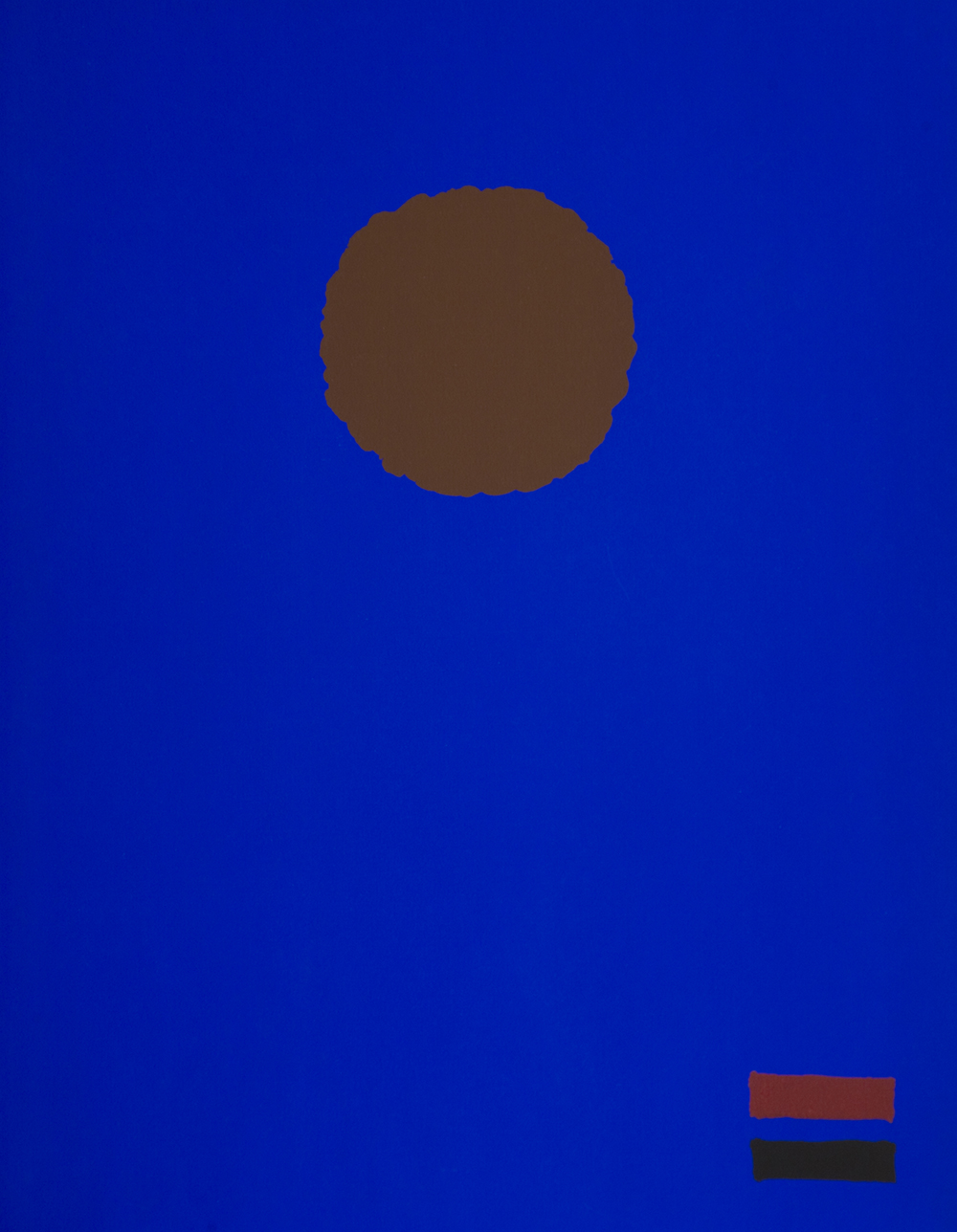
Although this work of art is abstract, meaning it is comprised of colors and forms that are not meant to realistically depict things, the artwork also gives an impression of a night scene. Besides the title, how does this painting give you the feeling of a nightscape? Think about all the techniques the other artists used to let you know their art was a nightscape. Look at the shapes, colors, and placement of objects in the print.
Your nightscape can be an abstract drawing too! Think about different colors that feel like night. What shapes would you use? Where will you put the shapes to help viewers think of night?
Drawing a Nightscape
Are you ready to draw and paint your own nightscape? We are going to use what we have learned to draw a landscape and then paint it to give the whole scene a grayed effect to make it look like it’s night.
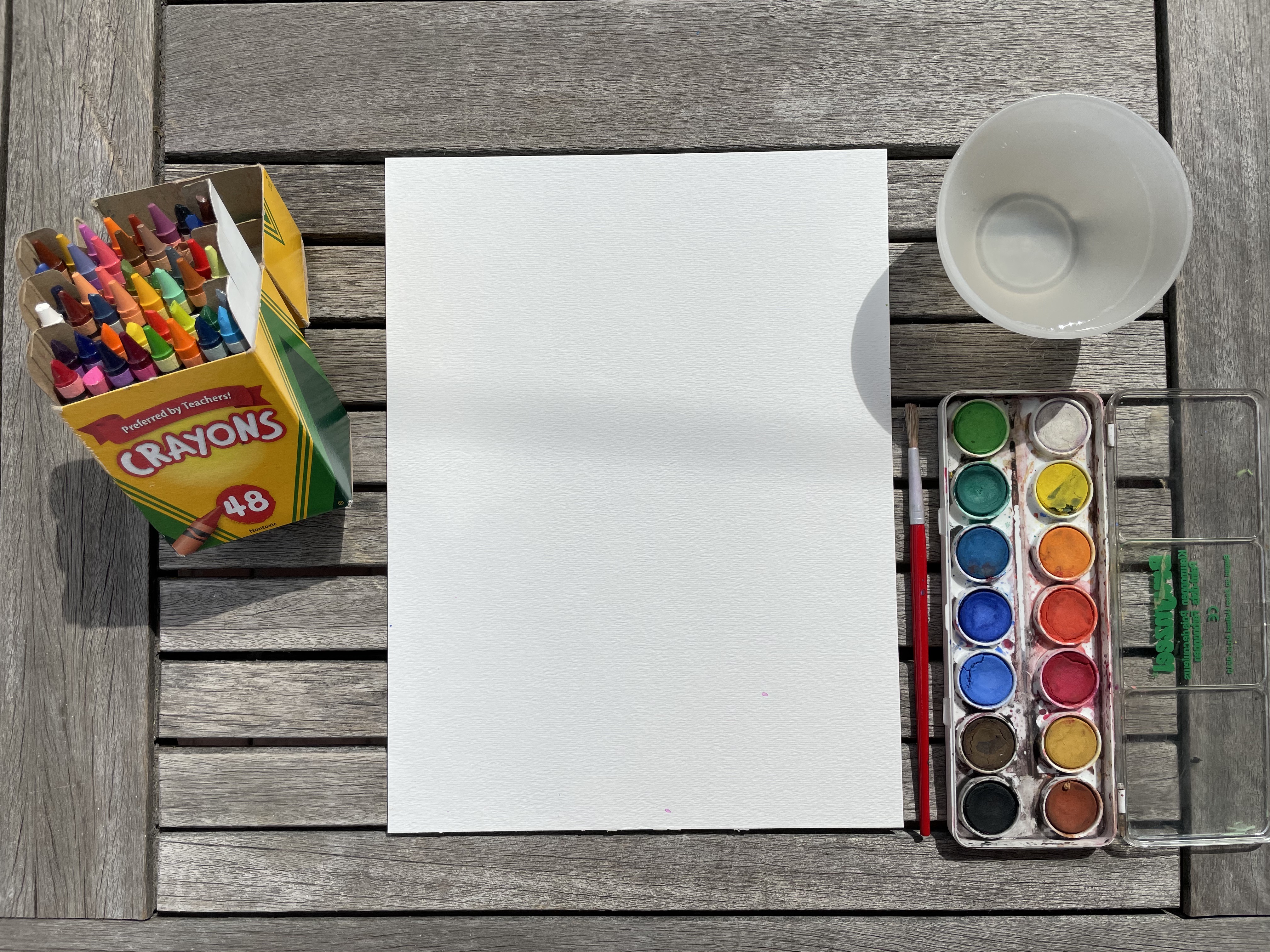
Supplies:
- Watercolor paper or white construction paper
- Crayons
- Black watercolor – watered down
- Brush
- Water
Directions:
Draw a landscape with crayons on a piece of paper. You can use a white crayon if you want to have a white space on your paper as we will be “graying” the paper later with watercolor to make it a nightscape.
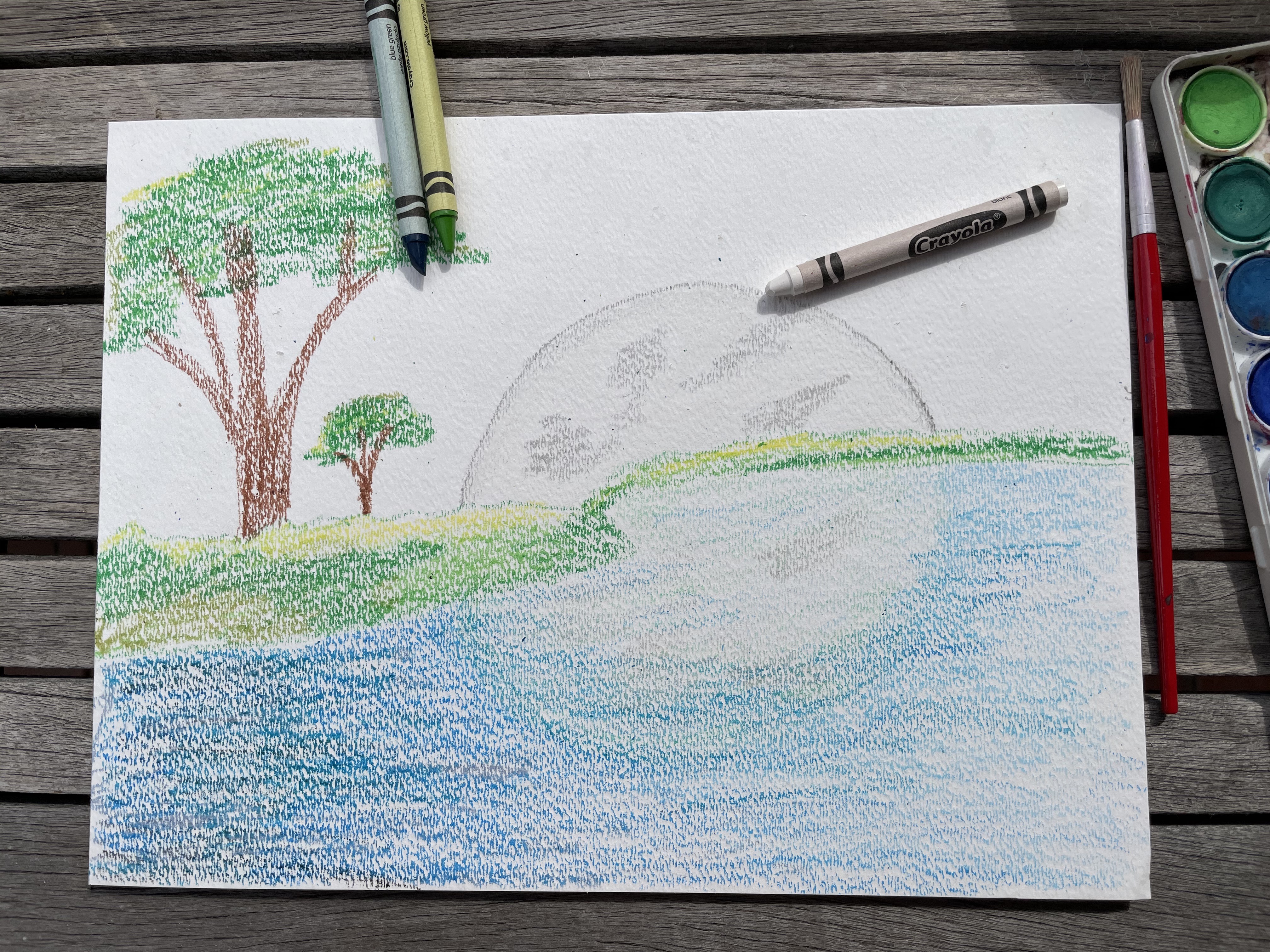
Ideas for drawing a nightscape:
- Try drawing things you would see at night like the moon or animals that only come out at night
- The white crayon works great to draw snow, stars, or the moon. It will show up later when we paint with the watercolor.
- Think about what you will put in the foreground or bottom of your drawing.
- What will you put in the middle ground or middle of the drawing? Usually, the middle ground is where your eye goes first so it is the main subject of your landscape.
- The background is at the top of your drawing. Things in the background are usually far away and drawn smaller than other parts of the drawing.
- But you can ignore all these rules and create something totally unique!
After you have drawn your landscape we will make it a nightscape using black watercolor. Remember learning about how the night makes colors look grayer than they normally do? The black watercolor will do the same thing with your crayon landscape.
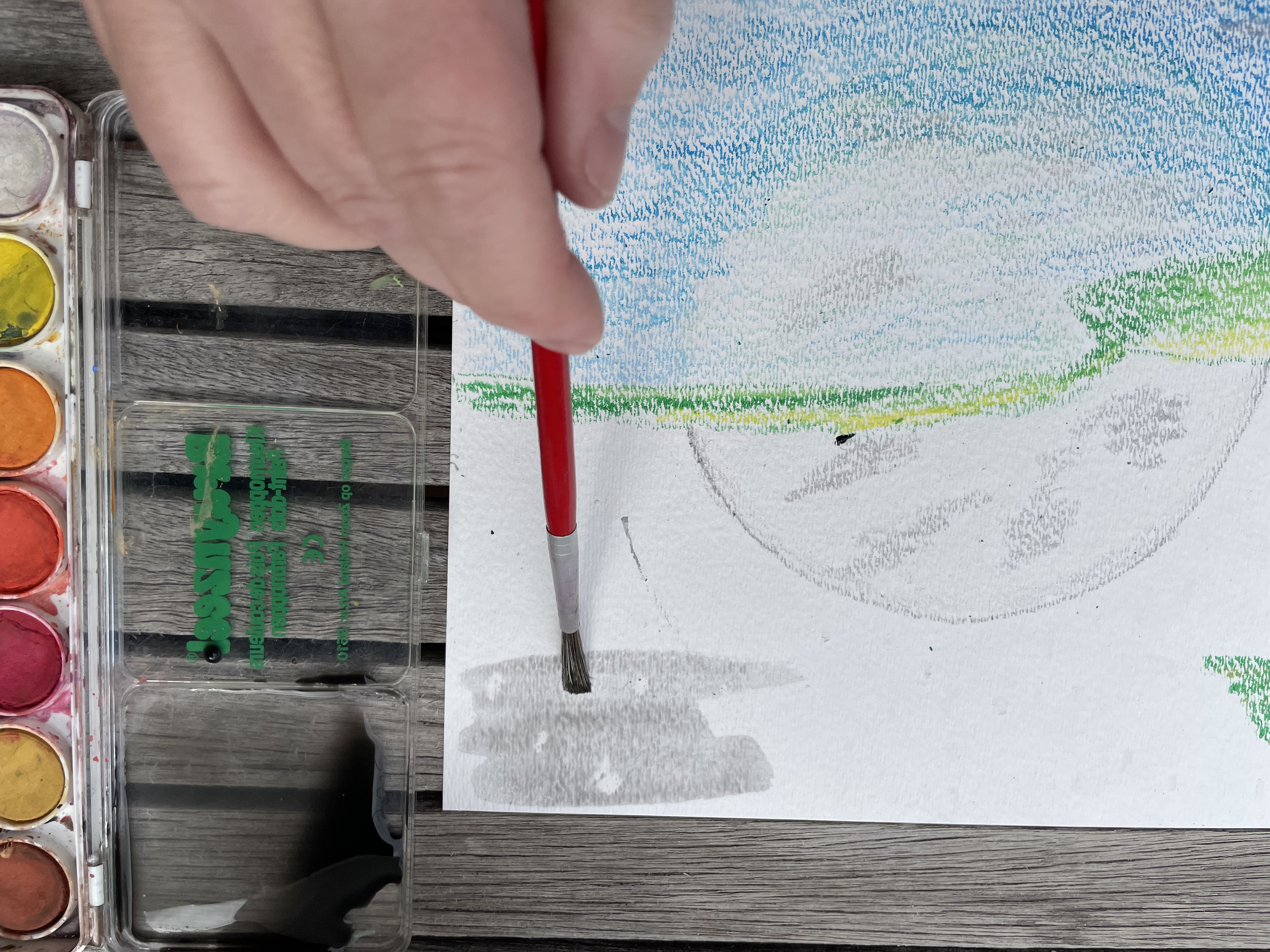
Take some black watercolor and water it down with a lot of water. What we want to do is make it more gray than black.
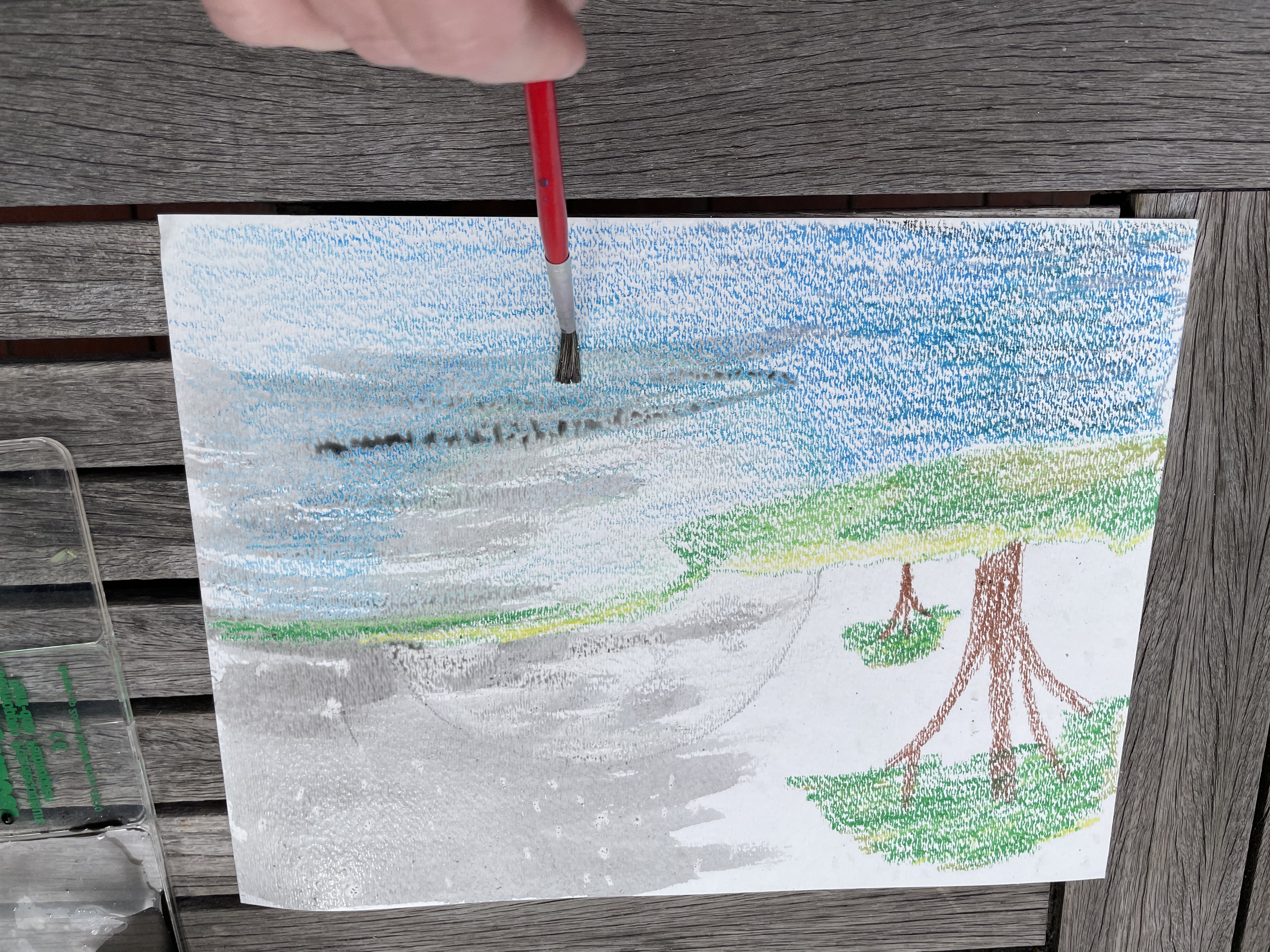
Paint over your whole crayon drawing with watercolor. Notice how the bright crayons have been toned down and now look like a night scene.
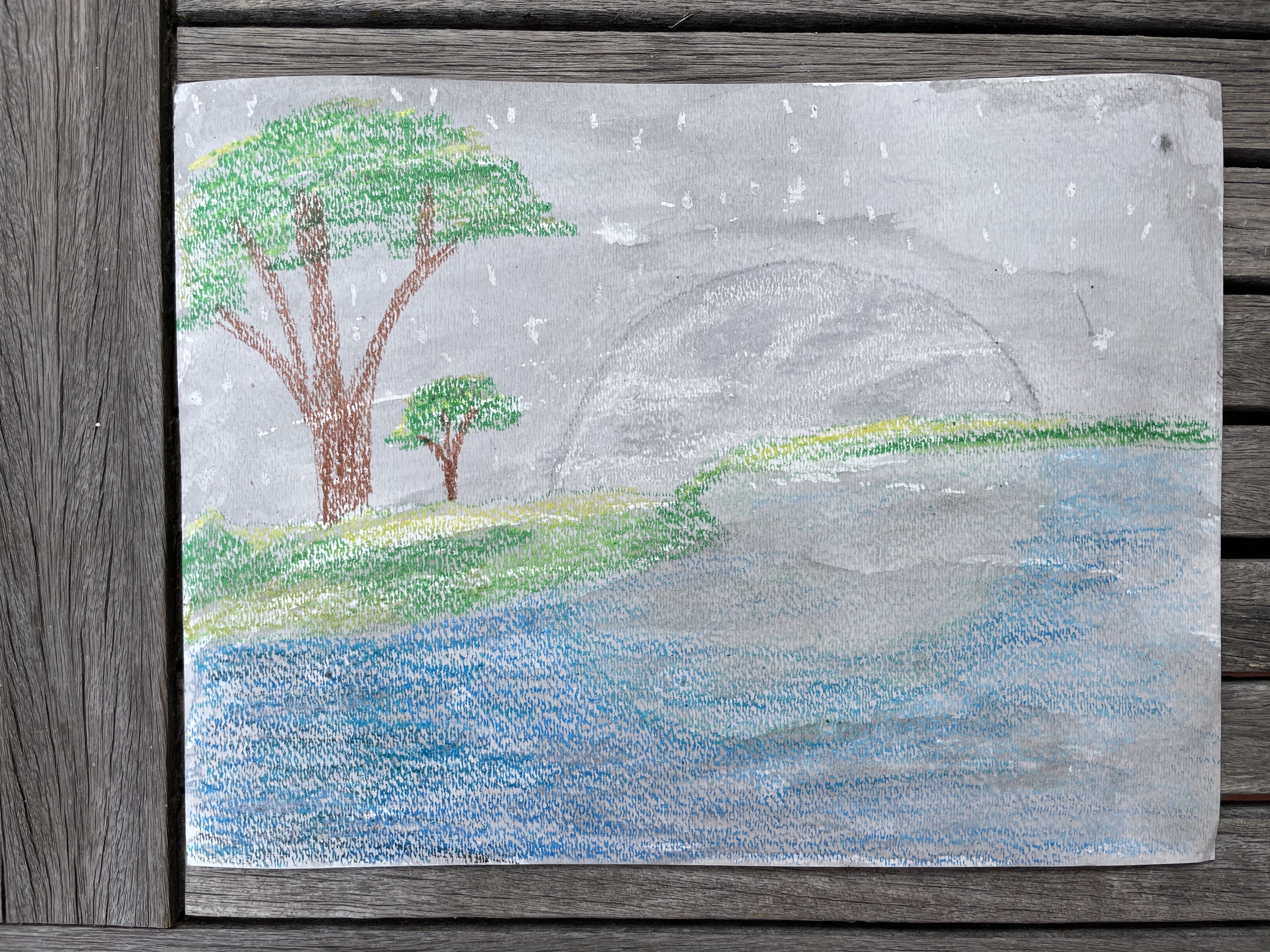
Science Note: What is happening? Crayons are made of wax. Wax is hydrophobic, in other words it doesn’t mix well with water. But the paper is hydrophilic, it absorbs the water. So, the water in the watercolor that you brush on the paper is mostly repelled by the crayon and absorbed by the paper. But a little bit of watercolor stays on the crayon making the color shaded grayer. This is what gives the illusion that you are looking at a nightscape!
